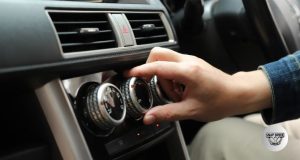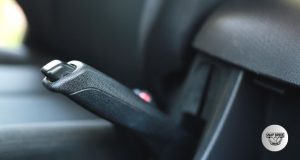Driving in wet conditions can be tricky, and your safety depends a lot on how well you brake. When the roads are slippery, stopping your car quickly becomes harder—and that’s where many accidents happen.
But don’t worry, you can take simple steps to stay in control and avoid danger. You’ll discover easy-to-follow tips that will help you brake safely when the rain hits. Keep reading to protect yourself, your passengers, and everyone else on the road.

Credit: allaroundautorepair.com
Contents
Adjusting Speed And Distance
Driving in wet conditions requires extra care. Slippery roads affect how your vehicle stops.
Slowing down and keeping enough space help prevent accidents when braking on wet surfaces.
Maintaining Safe Following Distance
Wet roads increase stopping distance. Keep a larger gap than usual between cars.
- Stay at least three seconds behind the car ahead in dry conditions.
- Double the following distance in rain to allow more reaction time.
- Increase space further if visibility is poor or the road is very wet.
- Avoid sudden stops by watching traffic and signaling early.
Reducing Speed Appropriately
Slower speeds reduce the risk of skidding and improve control when braking.
| Road Condition | Recommended Speed | Reason |
| Light rain | 10-20% less than normal | Reduced traction |
| Heavy rain | 20-30% less than normal | Longer stopping distance |
| Flooded road | Slow to crawl | Risk of hydroplaning |

Credit: flsheriffs.org
Proper Brake Usage
Braking safely in wet conditions is very important. Wet roads reduce tire grip and increase stopping distance.
Using brakes the right way helps keep control and avoid accidents on slippery surfaces.
Using Brakes Gently
Press the brake pedal softly and slowly. Sudden pressure can cause wheels to lock and slide.
Gentle braking helps maintain traction and lets you stop smoothly on wet roads.
- Start braking earlier than usual
- Apply light pressure first
- Increase pressure gradually if needed
- Release brakes if wheels start to skid
Avoiding Sudden Stops
Do not slam the brakes on wet roads. Sudden stops can cause loss of control.
Keep a safe distance from cars ahead. This gives you more time to brake gently.
- Watch traffic and anticipate stops
- Slow down early when approaching obstacles
- Use engine braking when possible
- Stay calm and steady while braking
Tire And Vehicle Maintenance
Driving safely in wet conditions depends on your vehicle’s condition. Well-maintained tires and brakes help you stop quickly and avoid accidents.
Check your tires and brakes regularly. This keeps your vehicle ready for slippery roads and heavy rain.
Checking Tire Tread And Pressure
Tires with good tread grip the road better in wet weather. Low tire pressure can reduce control and increase stopping distance.
- Inspect tire tread depth using a tread depth gauge or a coin.
- Replace tires if tread is below the safe limit, usually 2/32 of an inch.
- Check tire pressure monthly with a reliable gauge.
- Inflate tires to the manufacturer’s recommended pressure listed on the door frame.
- Look for cracks, bulges, or uneven wear on tires.
Ensuring Brake System Health
Brakes must work well to stop your car on wet roads. Regular checks prevent brake failure and improve safety.
| Brake Component | What to Check | Action |
| Brake Pads | Thickness and wear | Replace if less than 3 mm |
| Brake Fluid | Level and color | Top up or change if dark |
| Brake Discs | Surface condition | Replace if warped or scored |
| Brake Lines | Leaks or cracks | Repair immediately |
Handling Hydroplaning And Skids
Driving in wet conditions can be dangerous due to hydroplaning and skids. These happen when your tires lose grip on the road.
Knowing how to handle these situations helps you stay safe and avoid accidents on wet roads.
Recognizing Hydroplaning Signs
Hydroplaning happens when water builds between your tires and the road. It causes your car to float and lose control.
Look for these signs to know if you are hydroplaning:
- The steering feels light or unresponsive
- You hear a slushing sound under the tires
- Your car drifts without turning the wheel
- Speed feels faster than usual
Correcting Skid Situations
A skid happens when tires lose traction, causing the car to slide. It can happen on wet or icy roads.
Follow these tips to correct a skid safely:
- Stay calm and do not slam the brakes
- Take your foot off the gas pedal
- Turn the steering wheel in the direction of the skid
- If you have ABS brakes, press the brake pedal firmly
- Do not overcorrect or jerk the wheel
Credit: www.right2drive.com.au
Frequently Asked Questions
How Can I Brake Safely On Wet Roads?
Slow down and press brakes gently to avoid skidding on wet roads.
Why Is Hydroplaning Dangerous During Wet Braking?
Hydroplaning causes loss of tire grip, making braking and steering hard.
What Role Do Tires Play In Wet Condition Braking?
Good tire tread helps water escape, improving grip and stopping power.
How Far Should I Keep From The Car Ahead In Rain?
Keep a longer distance to give more time for safe braking.
Should I Use Abs When Braking In Wet Weather?
Yes, ABS helps prevent wheel lock-up and keeps control during wet braking.
Conclusion
Safe braking in wet conditions saves lives and prevents accidents. Always slow down and keep a good distance from others. Press brakes gently to avoid skidding. Check your tires often to ensure good grip. Stay calm and focused while driving in rain.
These simple steps help you stop safely and stay in control. Drive smart, stay alert, and protect yourself on wet roads. Safety starts with careful braking every time it rains.





